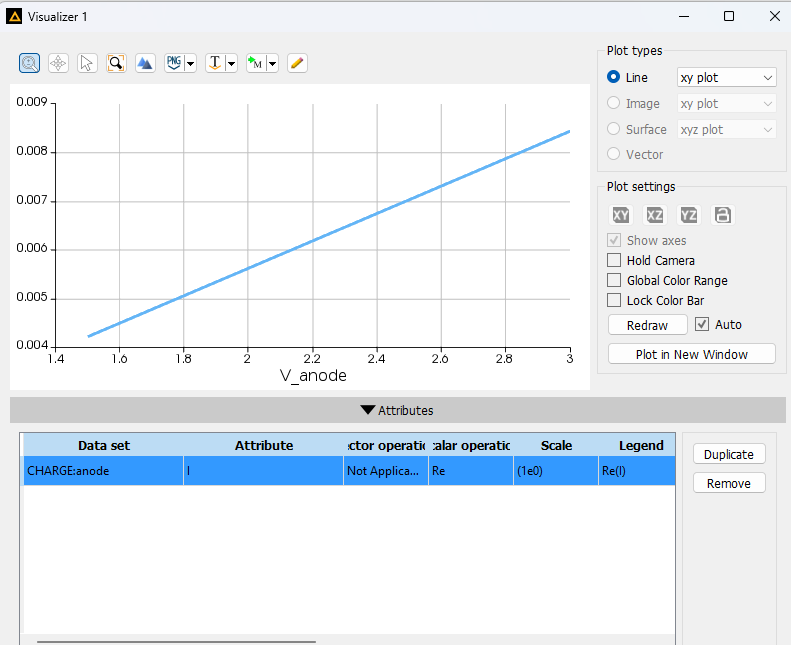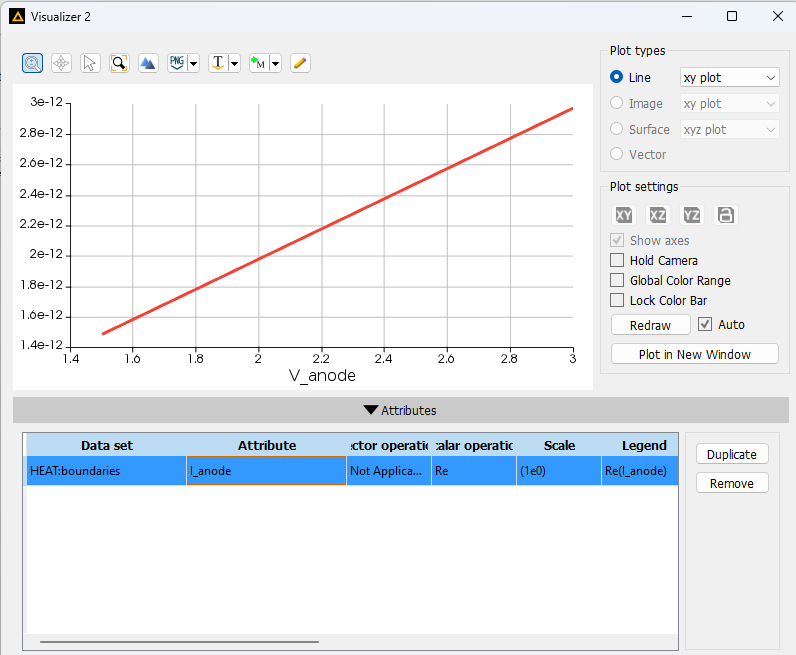TAGGED: charge, device, DEVIECE-Lumerical-charge, Lumerical-CHARGE, photonics, simulation
-
-
January 15, 2025 at 4:50 pm
tz2589
SubscriberHi,
I'm looking to find the thermal/electrical properties of a doped silicon bar with aluminum contacts using Lumerical CHARGE / HEAT. However, I am finding that the calculated currents through the contacts are drastically different in CHARGE and HEAT, despite using the same configuration and simulation region. I've looked through the Lumerical documentation and all of the CHARGE / HEAT simulation settings, but cannot seem to find the source of the mismatch. Below is a screenshot of the simulation setup:
Below is the current found through one of the aluminum contacts in CHARGE:
And below is the current calculated through the same contact in HEAT:
I would appreciate any kind of support on this. Thank you!
Best,
Tobias
-
January 16, 2025 at 1:25 pm
Afroditi Petropoulou
Ansys EmployeeDear Tobias,
Thank you for contacting us.
The equations that CHARGE solver and HEAT solver solve are different:
CHARGE solver introduction – Ansys Optics
HEAT solver introduction – Ansys Optics
CHARGE solves self-consistently the system of equations describing the electrostatic potential (Poisson’s equation) and density of free carriers (the drift-diffusion equations). The drift-diffusion of carriers is not considered in HEAT solver, hence, in the case that semiconductors are included in the geometry, the I-V curves calculated from CHARGE and HEAT are not expected to be the same.
Best regards,
Afroditi
-
January 17, 2025 at 3:43 pm
tz2589
SubscriberHi Afroditi,
Thank you very much for your response. That clears up a lot of my confusion.
In that case, is it possible to extract the thermal properties of a doped material using an applied voltage difference on two metal contacts? I'm interested in extracting the thermal profile of the silicon bar when a given voltage difference is applied. I have previously used the "Power" boundary condition, which assumes a fixed power from a surface, but would like to get a more realistic measure.
Thanks again,
Tobias
-
January 21, 2025 at 9:39 am
Afroditi Petropoulou
Ansys EmployeeHello Tobias,
You can run a self-consistent electro-thermal simulation with CHARGE and HEAT solvers in "coupled" mode. As explained in PIN Mach-Zehnder modulator – Ansys Optics example, in “coupled” mode the Joule heating is calculated giving more accurate results. Then you can export the temperature profile from a temperature monitor.
Best regards,
Afroditi
-
- You must be logged in to reply to this topic.



-
2918
-
970
-
852
-
599
-
591

© 2025 Copyright ANSYS, Inc. All rights reserved.








